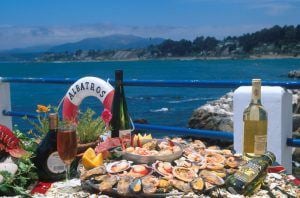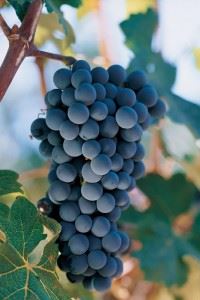May 9, 2012
|Last updated on February 13th, 2021 at 12:30 pm
Did you know that some of the best South American wines are from grape varieties that have long disappeared in Europe? And these days, in order to make the best international wines, brands often add South American wines to the mix. In essence, the story of the best South American wines is the story of the Carmenère from Chile, the Malbec from Argentina, and the Tannat from Uruguay. But let us go step by step, country by country, starting with that most famous wine country, Argentina.
Argentina Wines
 The obvious country for the best South America wines is Argentina. After all, Argentina has the highest per capita consumption of wine in all of South America. Italian and Spanish heritage did not only bring sophisticated European cuisine, but also the habit of having a glass of wine to go with it. Argentines have continued the traditions of their European ancestors. Wherever you see a couple of late-night diners in Buenos Aires enjoying authentic Argentine beefsteak, chances are they are also downing a glass of Argentine red wine.
The obvious country for the best South America wines is Argentina. After all, Argentina has the highest per capita consumption of wine in all of South America. Italian and Spanish heritage did not only bring sophisticated European cuisine, but also the habit of having a glass of wine to go with it. Argentines have continued the traditions of their European ancestors. Wherever you see a couple of late-night diners in Buenos Aires enjoying authentic Argentine beefsteak, chances are they are also downing a glass of Argentine red wine.
Another reason why the best South America wines are from Argentina is that the weather is perfect for vineyards in the northwest of Argentina. On an Essential Mendoza Wine Tour, one finds 350 days of sunshine. Mendoza has an arid climate, but there is plenty of water running down from the Andes and early settlers pioneered a sophisticated irrigation system. Wines from Mendoza are so perfect, that vineries do not even have to store them for years to to balance them out. Once they are in the bottle, they are ready for consumption. The Malbec red wine is the most famous from the Mendoza region. But unfortunately, these Argentine wines are hardly found in stores abroad. You have to travel to Argentina to appreciate a fine Malbec from the Mendoza region!
Chile Wines
 That’s why you probably know more about the wines of Chile. Chile has built up a wine industry geared for export. And the Chileans know how to compete. Chile called in experts and many of the vineyards are managed by companies from France or the USA. Outward-looking Chile also has invested in wine and gourmet tourism. It is not rare to find old “bodegas” converted into luxurious hotels with only a few rooms, but with an exclusive kitchen and cellar meant for cooking classes, gourmet dining, and exceptional wine tasting. And around Santiago in the Maipo River Valley, Chile has the perfect Mediterranean climate for growing grapes. Carmenère, similar to Cabernet Sauvignon, is originally came from France in the 19th century. The European varietal had difficult time with a plague, but the Chilean version thrives today.
That’s why you probably know more about the wines of Chile. Chile has built up a wine industry geared for export. And the Chileans know how to compete. Chile called in experts and many of the vineyards are managed by companies from France or the USA. Outward-looking Chile also has invested in wine and gourmet tourism. It is not rare to find old “bodegas” converted into luxurious hotels with only a few rooms, but with an exclusive kitchen and cellar meant for cooking classes, gourmet dining, and exceptional wine tasting. And around Santiago in the Maipo River Valley, Chile has the perfect Mediterranean climate for growing grapes. Carmenère, similar to Cabernet Sauvignon, is originally came from France in the 19th century. The European varietal had difficult time with a plague, but the Chilean version thrives today.
Uruguay Wines
 And then there is Uruguay: 10 years ago, a completely unknown country for most of us. Only a few people from the worldwide wine industry knew Uruguay. And they kept their knowledge as a secret for a reason. Often the very best wines elsewhere need a boost of flavor in rainy years. And for that boost, they come to Uruguay for help. Uruguay’s Tannats with their deep red (almost black) color and very intense tannins, are often blended with other wines. Today, Uruguay not only produces Tannats but a range of mostly red wines. Nowadays, wine makers have found the best recipes to tame the Tannats to perfection. For those looking for a taste bomb, you can also have a Tannat barrique. produced by adding even more tannins to the Tannat.
And then there is Uruguay: 10 years ago, a completely unknown country for most of us. Only a few people from the worldwide wine industry knew Uruguay. And they kept their knowledge as a secret for a reason. Often the very best wines elsewhere need a boost of flavor in rainy years. And for that boost, they come to Uruguay for help. Uruguay’s Tannats with their deep red (almost black) color and very intense tannins, are often blended with other wines. Today, Uruguay not only produces Tannats but a range of mostly red wines. Nowadays, wine makers have found the best recipes to tame the Tannats to perfection. For those looking for a taste bomb, you can also have a Tannat barrique. produced by adding even more tannins to the Tannat.
Uruguay’s, Argentina’s and Chile’s very best wines all have common origin in France. The Tannat from the foothills of the Pyrenees, the Malbec from Burgundy, and the Carmenere from Bordeaux. Interestingly, the Spanish Jesuits were not the ones who brought these South America wines. They indeed brought grapes from Europe. However they were all completely replaced by the nobler French varieties in the 19th century.
For wine lovers who are looking alternatives to European wine South America wines are an excellent option. Check out our essential South America Wine Tour, which includes all the wines discussed here, as well as a tour of Buenos Aires with a tango show & dinner! Or for more inspiration, see our Enófilo’s Secrets article.



